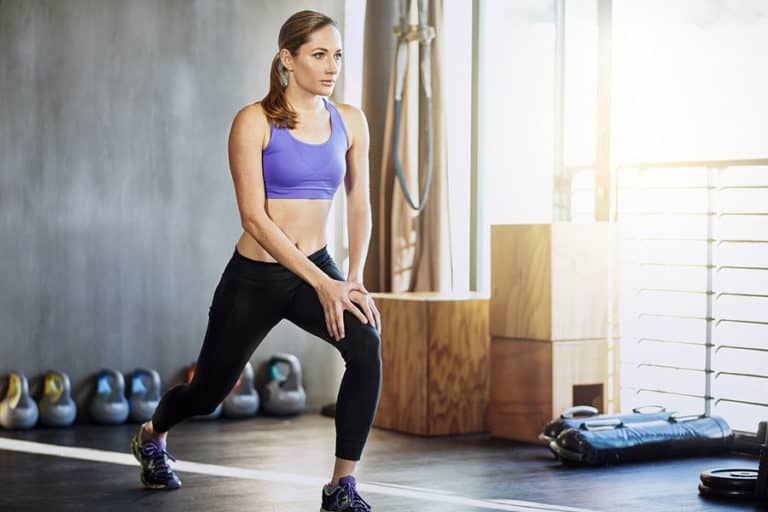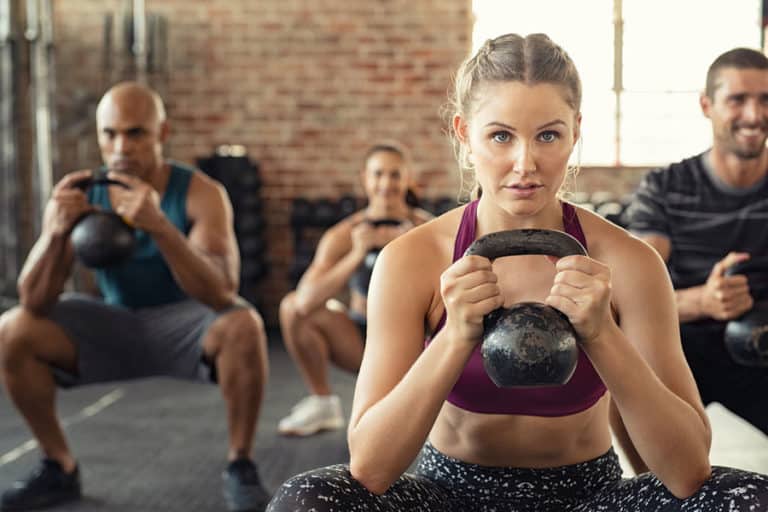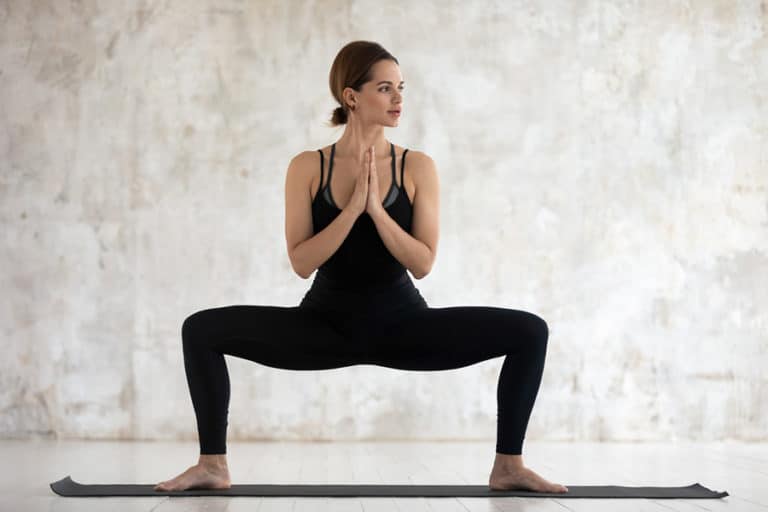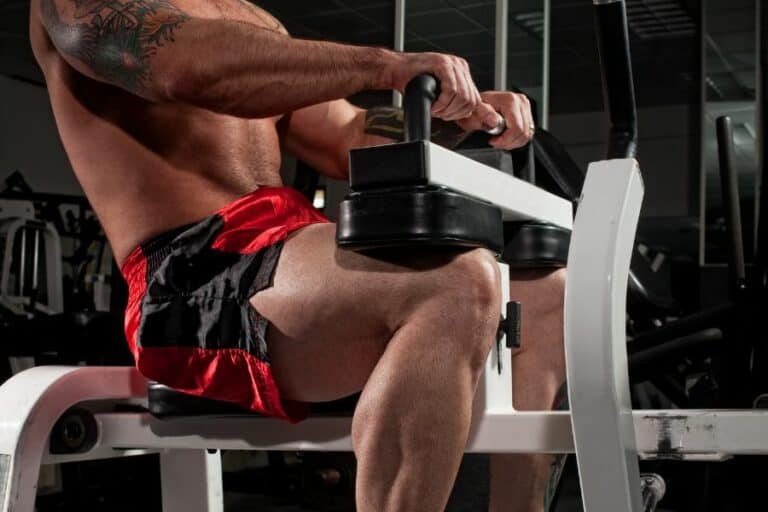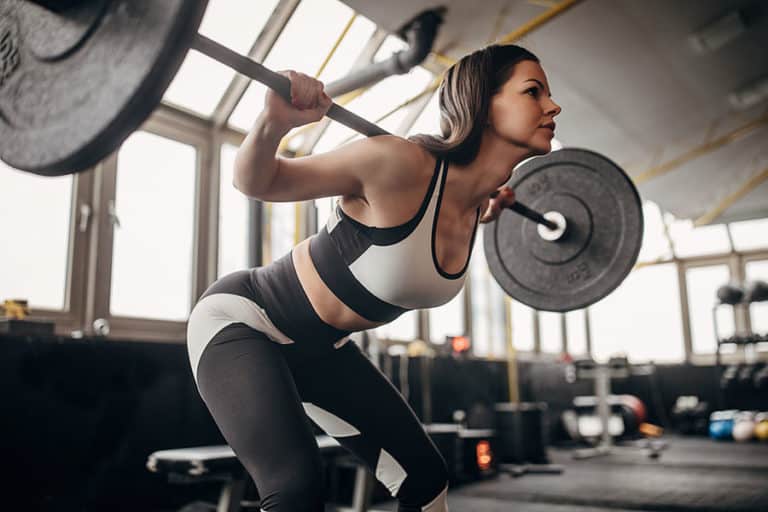Lateral Squat – How to do, Benefits And Safety Measures
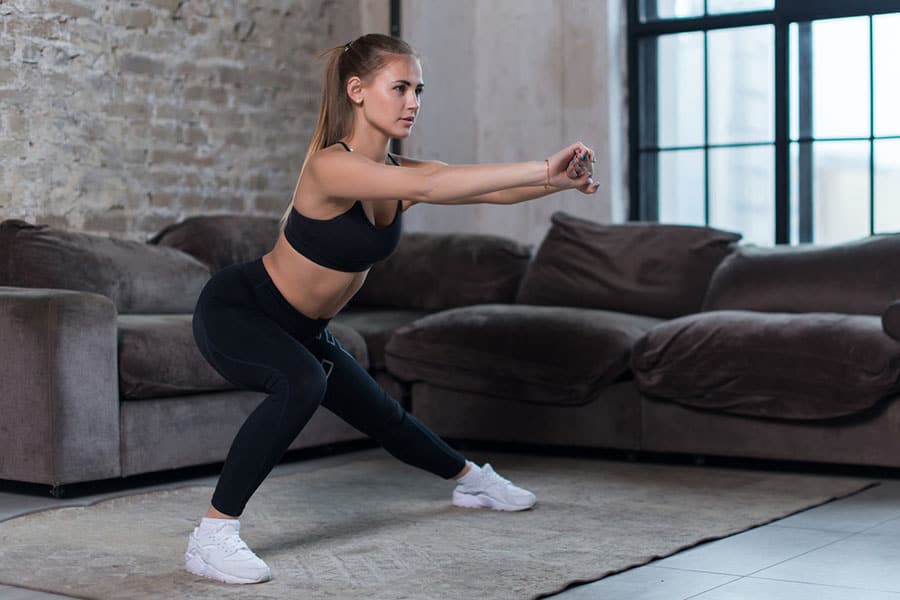
How to do | Muscles worked | Who Should/Should Not | Add to routine | Safety Tips | Benefits | Variations
The lateral squat is one of the classic variations of squats. Also known as side squats, targets the muscles of the lower body by working the frontal plane.
It is a beginner-friendly exercise that can be performed without any equipment. It is known to enhance the functional capacity and flexibility of the joints in the lower body.
How to do a bodyweight lateral squat?
It is important to do this exercise with proper form to avoid injury. Here’s how to do a lateral squat:
- Start with your feet wider than your shoulder width, in a way that your legs form a triangle with the ground.
- Keep your toes pointed slightly outwards.
- You may bring your hand forward for counterbalance or interlace your fingers in front of you.
- Lower your hips and shift your weight onto your right leg by bending your right knee such that the thigh of this bent leg is parallel to the floor.
- Meanwhile, your left leg should be extended fully on the side. Keep your left leg straight and ensure your left foot is flat on the floor.
- Brace your core and hold the pose for a moment to feel a good stretch in your inner thigh muscles.
- Move back to the starting position by driving your weight through your right leg.
- Repeat the same on the opposite leg by bending the left knee.
Note: If you face difficulty shifting your weight from side to side. Practice the lateral lunge. The lateral lunge requires you to bring your feet together and stand tall after lunging on each side.
Muscles worked
The side-to-side motion of the lateral squat engages several muscle groups simultaneously. Given- below are the muscles that it works:
| Quadriceps muscles | rectus femoris, vastus lateralis, vastus medialis, vastus intermedius |
| Hamstrings | semitendinosus, semimembranosus, and biceps femoris muscles |
| Glutes | gluteus maximus, gluteus medius, gluteus minimus |
| Core muscles | transversus abdominis, rectus abdominis, external oblique muscles, internal oblique muscles |
| Inner thigh muscles | gracilis, adductor brevis, adductor longus and adductor magnus |
Who should and should not do?
The lateral squat is a bodyweight squat that can be performed by beginners. However, certain sets of people should intentionally include or refrain from this movement.
Who should perform lateral squats
- Beginners must include this exercise in their routine. These squats are a valuable tool to enhance the performance of other lower body movements that are more complex.
- Individuals interested in toning their inner thighs and glutes must add lateral squats to their fitness routine.
- The lateral squat works on the hip adductors, thus improving hip mobility. This eventually means that it works on the overall lower body flexibility [1]PubMed: Hip adductors’ strength, flexibility, and injury risk. Hence, sports athletes like soccer players or ice hockey players that require lower-body flexibility must include lateral squats in their routine.
Who should not perform lateral squats
- Anyone who has been through a recent surgery (ankle, hip, knees) should avoid performing this exercise.
- Individuals with recent injuries or pre-existing medical conditions should perform this exercise only under the care and supervision of a certified fitness professional/instructor.
How to add it to your workout routine?
Lateral squats can be easily added to any exercise routine. However, knowing how many squats one should do is essential.
As a stand-alone exercise
- Beginner level: 10-15 reps on 2-3 sets (each side)
- Intermediate/advanced level: 12-18 reps of 3-4 sets (each side)
In a circuit
Here is a sample circuit for beginners:
| Exercise | Reps/time |
| Push-ups | 10-12 reps |
| High-knees | 15-20 reps (each leg) |
| Bicep curls | 10-12 reps (each side) |
| Lateral squats | 10-12 reps (each leg) |
| Mountain climbers | 12-15 reps (each leg) |
Use the circuit given below if you are at an intermediate/advanced level:
| Exercise | Reps/time |
| Mountain climbers | 15-20 (each leg) |
| Deadlifts | 6-8 reps |
| Weighted lateral squats | 10-12 reps (each leg) |
| Goblet squats | 10-12 reps |
| Back squats | 6-8 reps |
Note: Perform some static stretches as a warm-up and some dynamic stretches as a cool-down to prevent injury and for better muscle recovery. You may perform 2-3 sets of the circuits mentioned above. Modify the reps and weights as per your desired intensity.
Safety measures to follow
It is essential to perform any exercise with proper form keeping its safety measures in mind. Here are some safety tips that will assist you in performing lateral squats with caution and avoiding injury:
1. Starting position
It is important to place your feet wide enough when you begin. The ideal distance between the two legs would be 3-4 feet. Keeping a narrow gap between the legs will not engage the muscles and hence would not prove beneficial.
2. Knee position
It is necessary for your knees to be in line with your toes. If not, it may cause strain to your knees and ankles. Moreover, do not allow your knees to cave inwards while performing this movement.
3. Hip position
While performing lateral squats, make sure that your hip is not shifting forward. Focus on sitting back, as this will engage the glues efficiently and give you the maximum benefit from this exercise.
4. Back position
Keep your chest up and back upright, as curling your back may cause unnecessary lower back pain. Secondly, leaning forward excessively may cause you to lose balance.
5. Feet position
It is a common mistake to raise your heels while driving up to the starting position. It is important to keep the feet flat and not put excessive pressure on the balls of your feet.
6. Brace your core
It is essential to engage your core as you squat, as it helps stabilize and allows you to perform the movement with total control.
7. Progress steadily
If you are a beginner, work on your range of motion and tempo of the squat. Do not overdo the exercise and perform deeper squats beyond your level of mobility. This will put you at risk of lower back and knee pain.
8. The correct form to drive up
It is essential to keep your one knee bent and the opposite leg straight to reap the full benefits of this exercise. If your opposite knee is also slightly bent, you will face difficulty shifting your weight to the other side.
9. Perform the exercise in front of a mirror
It is advisable to check your form in the mirror while performing the exercise. This will allow you to identify any incorrect posture and avoid it.
Benefits of lateral squat
Lateral squats are loaded with multiple benefits. Here are some of the most notable ones:
- It works on what is called the frontal plane [2]National Academy of Sports Medicine: SAGITTAL, FRONTAL AND TRANSVERSE BODY PLANES: EXERCISES & MOVEMENTS in anatomy. Unlike several other lower body movements, which generally focus on the sagittal plane, lateral squats work on your frontal plane. This side-to-side movement focuses on the coronal (frontal) plane, which is often neglected. Regularly practicing such exercises reduces joint stiffness and muscular imbalances.
- Squats are functional exercises [3]National Academy of Sports Medicine: FUNCTIONAL TRAINING: COMPOUND WORKOUTS FOR FITNESS. Lateral squats being a variation of the same, inevitably helps you perform everyday tasks better.
- Studies [4]National Library of Medicine: Short-Term Compound Training on Physical Performance in Young Soccer Players have shown that compound training improves strength and boosts agility. Lateral squats are a variation of the basic squat that works similarly.
Lateral squat variations to try
To add some variety to your routine and make the most out of this exercise, here are some lateral squat variations that you can try:
Weighted lateral squat (with dumbbells)
If a bodyweight lateral squat feels too easy, you can make it more challenging by holding dumbbells in each hand while performing the lateral squat movement. Since added resistance [5]Better Health: Resistance training – health benefits increases muscle strength, this variation is bound to result in increased muscular strength.
Cossack squats
The cossack squat is a variation similar to the lateral squat. The only difference in this variation is that the foot of the straightened leg is not flat; the foot is resting on the heels with the toes facing upwards. This gives a better stretch to the calves and hamstrings, whereas the lateral squat works the inner thighs better.
Goblet squat
This variation of the lateral squat is done with weights. In this move, the person holds a weight close to their chest with both hands while performing the squat movement. The goblet squat is a great move that works the posterior chain and strengthens the quads.
Conclusion
The lateral squat is a great exercise to improve strength, agility, and functionality. The key to reaping the maximum benefits of this exercise is to perform this exercise with the proper form and by adhering to the safety measure.
References
| ↑1 | PubMed: Hip adductors’ strength, flexibility, and injury risk |
|---|---|
| ↑2 | National Academy of Sports Medicine: SAGITTAL, FRONTAL AND TRANSVERSE BODY PLANES: EXERCISES & MOVEMENTS |
| ↑3 | National Academy of Sports Medicine: FUNCTIONAL TRAINING: COMPOUND WORKOUTS FOR FITNESS |
| ↑4 | National Library of Medicine: Short-Term Compound Training on Physical Performance in Young Soccer Players |
| ↑5 | Better Health: Resistance training – health benefits |


